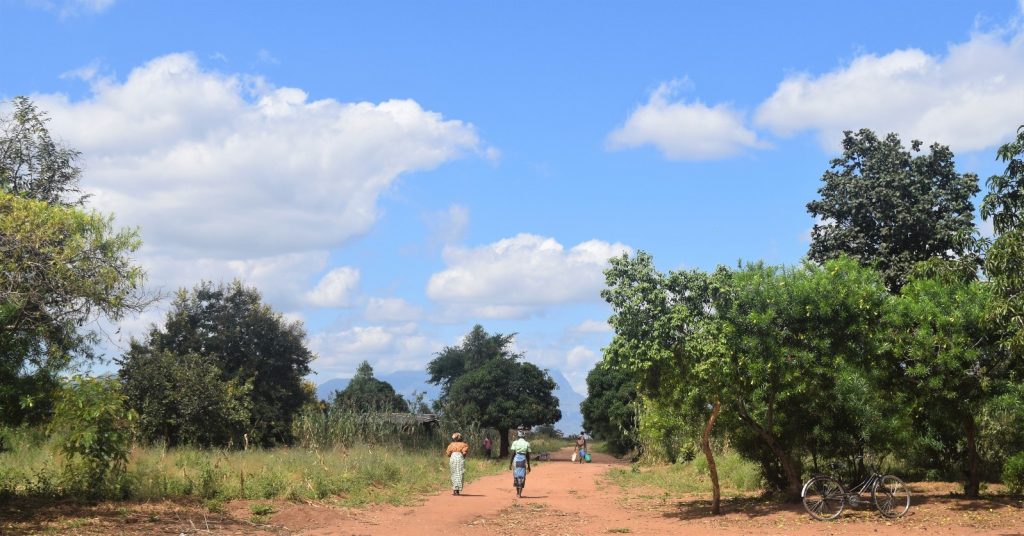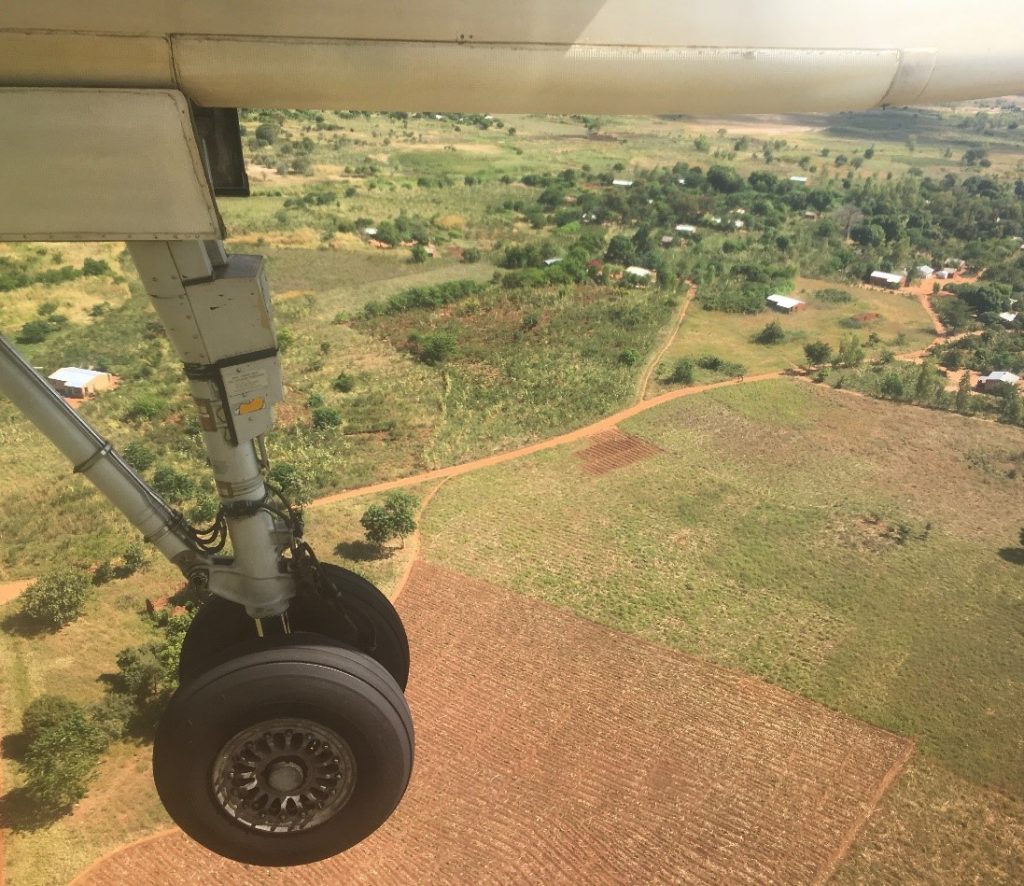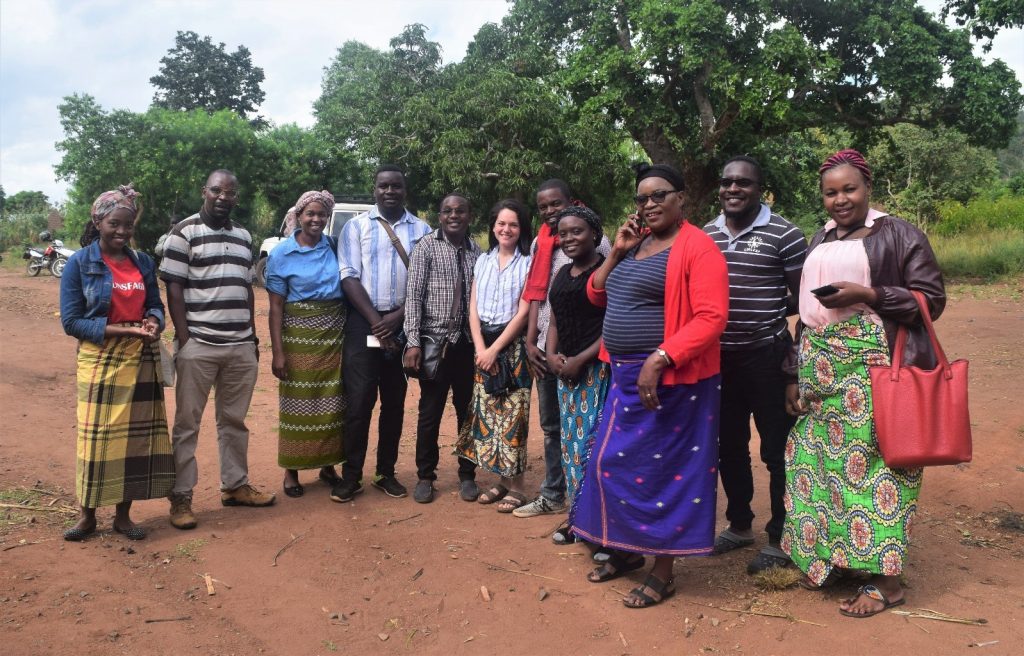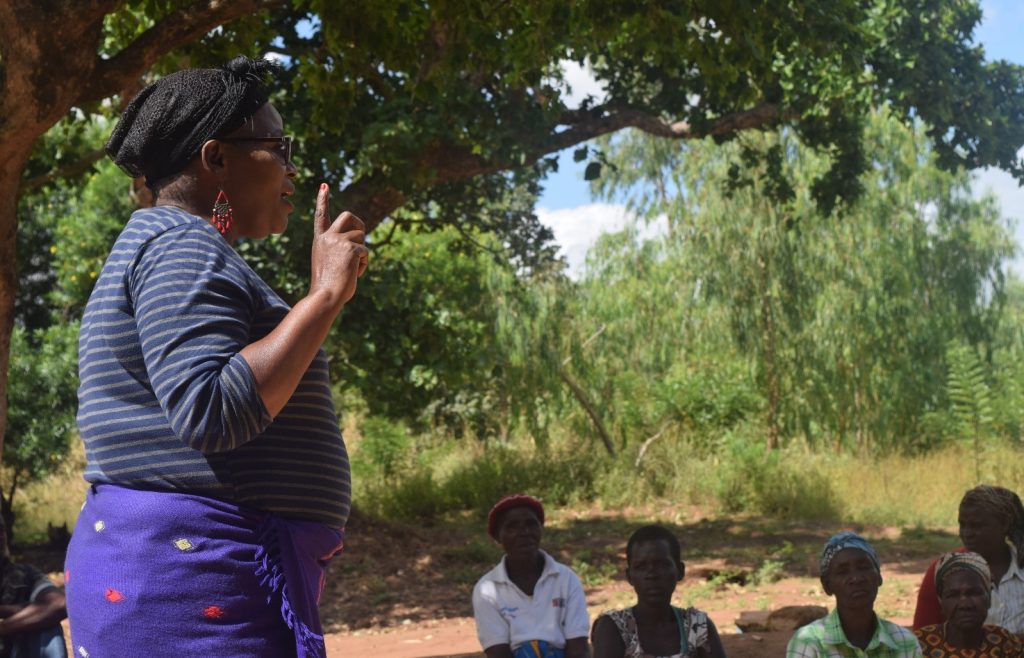Insurance against poor harvests can give farming households some financial security in the harsh world of arable farming in Africa. As part of the TAMSAT project, which has been shortlisted for an Impact and Engagement Award, Dr Vicky Boult has recently been to Malawi to harness the local knowledge of farmers and use it to design better drought insurance products.

Flying low over the farmland surrounding Malawi’s commercial capital, Blantyre, it’s easy to get a sense of the agricultural system here. Most fields are small and planted with a mixture of crops; mostly maize, sorghum and sunflowers. Amongst the furrows, small groups of goats, chickens and pigs forage for food.
Farmers rely on steady rainfall throughout the November-to-April wet season to get sufficient crop yields, but in some years rainfall is too low or comes at the wrong time, leading to crop losses. The heavy dependence on crops as a source of food and income means that a failed harvest can hit farming households hard.

Cushioning the blows
Weather-index insurance (WII) can provide a buffer for farmers against crop losses due to drought. When a weather-index threshold (such as minimum rainfall) is breached, affected farmers are able to claim on their insurance policy, helping them to ride out a failed harvest.
But WII can only help farmers’ resilience to extreme weather events if this threshold fairly reflects the risks for both farmers and insurers. If pay-outs are made too often, insurers will go out of business, but if pay-outs are not made often enough, farmers will suffer the effects of drought without financial support.
Some amount of so-called ‘basis risk’ – the mismatch between compensation and experienced losses – is inevitable, as insurance is not designed to cover all eventualities. But minimising it is a key challenge in developing effective agricultural insurance schemes.
Comparing historic insurance pay-out years with measures of drought on the ground, such as a rain gauge or crop yield data, can help to evaluate insurance thresholds and reduce basis risk. But these on-the-ground measurements are often limited in Africa. Farmers themselves can provide an alternative and valuable source of on-the-ground information because their livelihoods demand an intricate knowledge of environmental conditions.
Involving farmers in research
This on-the-ground knowledge is feeding into SatWIN-ALERT – a NERC-funded University of Reading project which supports drought insurance design across Africa. As part of the project, I travelled to Malawi to gather information from farmers. To do this we used focal group discussions, which brought together 15-20 members of a single village to discuss their responses to a series of questions, and household surveys, in which only the head of the household answered questions.

My aim was to find out about current agricultural practices, local environmental features, socio-economic factors affecting the population and perceptions of drought. We will use this in designing insurance products with fitting weather-index thresholds. We asked farmers taking part to identify the nine worst drought years since 1983 and rank them in order of severity.
This information provides a clear basis for evaluation of WII products in previous years. Closer alignment between the drought years that the farmers told us about and years in which insurance pay-outs were made suggests that better weather-index thresholds were used on those years.

Scaling up across Africa
Participatory approaches in which questions are discussed in groups and a consensus reached are generally considered to provide better quality and more accurate results than surveys of individuals. But carrying out this kind of research all over Africa may not be feasible, and insurers may favour a quicker method such as surveys of people via mobile phone.
In using both approaches during the field mission in Malawi, SatWIN-ALERT can compare the results provided by groups and individuals, and can in turn assess the reliability of future mobile phone surveys for evaluating weather-index insurance.
SatWIN-ALERT is a NERC-funded collaboration between the International Research Institute in Climate and Society (IRI), the University of Reading and Centre for Agricultural Research and Development and Lilongwe University of Agriculture and Natural Resources (Malawi). Working with six insurance partners, SatWIN-ALERT supports the operation of drought insurance products across Africa through addressing research gaps in weather-index insurance design and basis risk reduction.
SatWIN-ALERT is part of the wider Tropical Applications of Meteorology using SATellite data (TAMSAT) research intiiative, led by the UoR’s Dr Emily Black. Dr Emily Black has been shortlisted for a University of Reading Impact and Engagement Award for her work on the project. Winners will be announced today.
Dr Vicky Boult is a Postdoctoral Researcher in the Department of Meteorology at the University of Reading, documenting the impact of TAMSAT research and expand its use for ecological applications.
A version of this post also appears on the IRI’s blog.
